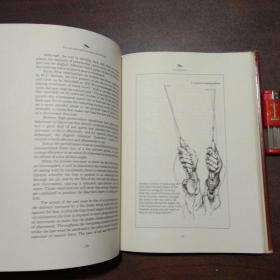Content:
As the temperatures plummet and the world turns a frosty shade of blue, anglers often find themselves grappling with the challenge of cold weather fishing. The allure of catching fish during the chilly months is undeniable, but the cold can make even the simplest tasks, like casting a fishing rod, more of a task than a leisurely pastime. Fear not, fellow anglers! We've compiled a comprehensive guide to help you navigate the art of casting and reeling in the big ones when the weather turns frosty.

Layer Up Like a Snowman
Before we delve into the nitty-gritty of casting techniques, it's crucial to ensure that you're properly dressed for the cold. Just like a snowman, you need to layer up to stay warm. Start with a moisture-wicking base layer to keep sweat at bay, add an insulating layer to trap body heat, and finish with a waterproof, wind-resistant outer layer. Don't forget to protect your extremities with gloves, a hat, and a scarf.
Choose the Right Gear
Cold weather fishing demands specific gear to keep your equipment from freezing up. Opt for a rod with a heavier action, as they are less prone to snapping under the weight of a fish when your hands are cold and stiff. The same goes for reels; go for a sturdy, cold-weather reel that won't freeze up when the temperatures drop.
Warm Up Your Rod and Reel
Before you even think about casting, take a few minutes to warm up your rod and reel. Hold the rod in your hands for a few minutes to warm it up, and if possible, use a heat pack or hand warmer to keep your hands toasty. Similarly, give your reel a few spins to ensure that it's free of any ice or snow that could hinder its operation.
The Casting Technique
Now that your gear is ready and your hands are warm, it's time to cast. Here are a few tips to ensure your cast is as successful as possible:
- Start with a Short Cast: Begin with a short cast to warm up your arm and get a feel for the rod. This is especially important when your hands are cold and stiff.
- Keep Your Arm Moving: Use a smooth, continuous motion when casting. Jerky or erratic movements can lead to an inaccurate cast.
- Focus on Accuracy: In cold weather, it's more important to cast accurately than to cast far. Fish are less active, so they're not likely to chase a lure that's too far away.
- Use a Slower Retrieval: When the water is cold, fish are less likely to chase after fast-moving lures. A slower retrieval can be more effective in triggering a bite.
The Reeling Technique
Once you've hooked a fish, it's time to reel it in. Here's how to do it effectively:
- Keep the Reel Spool Bent: When reeling in a fish, keep the spool slightly bent to prevent line twist. This will also help you maintain a steady pressure on the fish.
- Use a Steady Pressure: Apply consistent pressure to keep the fish from feeling threatened. A sudden jolt or release can cause the fish to break off.
- Stay Patient: In cold water, fish may be more likely to pull away when they feel pressure. Stay patient and maintain a steady, firm grip.
Safety First
Lastly, always prioritize safety when fishing in cold weather. Keep an eye on the weather forecast and dress appropriately. Always fish with a partner, and carry a first-aid kit and a means of communication, such as a cell phone or a two-way radio.
By following these tips, you'll be well-prepared to tackle the challenges of cold weather fishing and enjoy the thrill of reeling in the big ones, even when the temperatures are dipping below freezing. So bundle up, grab your gear, and get ready to cast your line into the frosty waters ahead!












